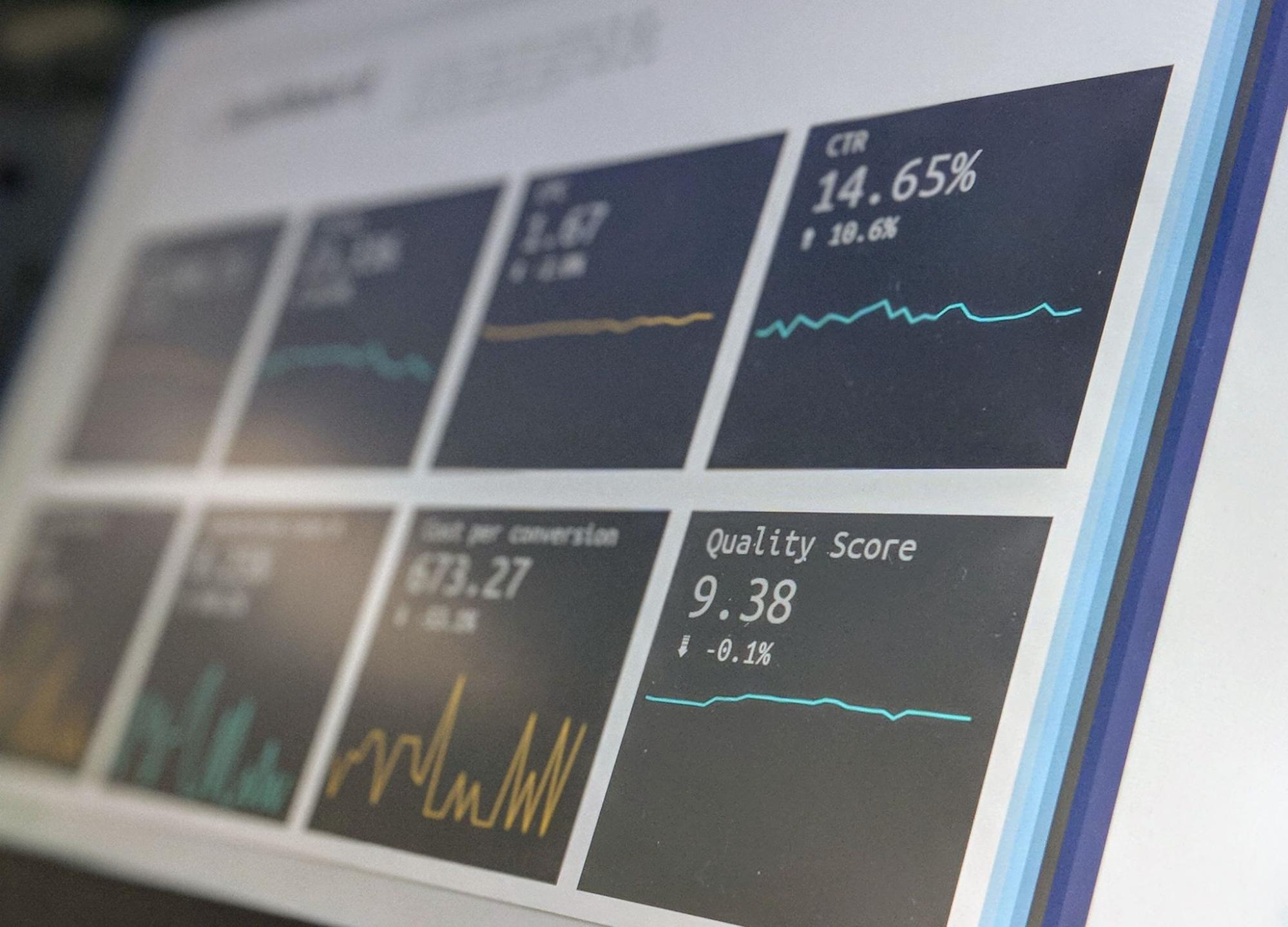In a digital world where the data is so noisy, predicting the performance of your marketing efforts is tricky. With more variables than you know what to do with, much less understanding the fundamental relationships between them, it’s easy to lose your way.
Instead of relying on guesswork, assumptions, and chasing false signals, however, you can model the outcome of your campaigns.
Using proven forecasting methods and best practices allows you to manage performance and achieve your ultimate goals. By making data-driven (and with data virtualization, more cost-effective and timely) decisions, you can invest your resources where it yields the best return.
In this article, we walk through how marketing forecasting works.
What Is Marketing Forecasting?
Marketing forecasting is a method for making predictions about the performance of your marketing activities. By leveraging historical data, the performance of your existing campaigns, and considering the impact of emerging trends (say, the growth of phone companies for small businesses), you can predict future outcomes across strategies and channels and make better decisions for your business.
1. Formulate Marketing Goals
We’re in an age of agile management. For example, today’s manufacturing industry demands such a degree of flexibility that forward-thinking manufacturers are investing in manufacturing industry solutions that unifies data in one platform and allows for faster decision-making. Still, that doesn’t mean marketers can sacrifice setting crystal clear goals.
Goals describe future situations and provide a framework to orient and guide actions. What do you want to achieve? Where are you headed on your journey? Forecasting helps you get there with maximum efficiency. Successful forecasting depends upon formulating specific, measurable marketing goals that you can reliably control and monitor.

Image sourced from Zippia.com
You’ll likely have more than one, but it’s essential to sufficiently specify which goal each marketing initiative is attempting to target. It’s helpful to break goals down into operational targets. To clarify terminology marketers use interchangeably: goals describe the high-level aims that you then make specific with objectives.
The scope of your outbound prospecting strategy might include micro conversions (customer actions on the journey towards a purchase) or macro conversions such as purchases, sign-ups, or form submissions.
Goals are the long-term results you have in your sights, deduced with your analytics software. For example, to increase conversion rates by 150%. Typically broad, they can be more or less ambitious, requiring a longer time frame to achieve, such as increasing brand awareness.
Objectives are the specific, measurable, achievable, relevant, and time-bound (SMART goals) actions you must take – the targets you set to stay on track – to measure and attribute success and failure at every turn.
2. Set Your Budget
Allocating your budget to hit the exact numbers of the goals and objectives you have set is a crucial variable you need to get right for accurate forecasting. Whether you’re trying to increase revenue or leads on a media and entertainment solutions or your newly launched cloud communication solutions landing page, the budgeting process will determine the amount of money you’ll need to put towards achieving different objectives.
Marketers typically determine how much to invest in campaigns in two ways. Either a business derives its budget from a fixed percentage of revenue (benchmark budget), or they derive it from its defined marketing goals and workable strategy for making it happen.
Goal-based budgets are significantly more complex to implement because they require you to think hard about the interplay between means and effects in your forecasting. But they are infinitely more effective at getting results.
Setting goal-based budgets are the only sensible approach to marketing forecasting. That way, you have enough room to tweak your budget allocation to optimize performance, maximize ROI, and avoid potentially relinquishing your market share to competitors.

Image sourced from Unsplash
3. Start Your Campaign Ideation
With your marketing goals formulated, you can work out the means you have to achieve, for example, your gross profit target, and break down your objectives into metrics. From there, you are all set to start putting campaign ideas together to run the campaign forecasting that will help you achieve your target within your means.
As ever, campaign ideas are to be guided by your specific marketing goal. Let’s say you’re looking to boost conversion rates, and your analytics suggest room for improvement. You would start coming up with campaign ideas and setting objectives based on what you need to achieve.
Some objectives can be measured with single KPIs (reducing loading times; increasing CTR impressions); other ideas are more challenging (increasing traffic quality), impacting metrics and KPIs only indirectly.
Just as keeping things logical is key to continuous delivery testing in software development, so must you also test your objectives logically as you optimize metrics, anticipating how they impact each other and overlap. From then on, you might come up with more ideas to optimize further.
4. Forecast Performance
Okay, so you have your goals, budgets, and campaign ideas figured out. How do you actually run the models and forecast performance?
The simplest method is extrapolation. For example, once you identify your average daily spend and average daily conversions, you can multiply them by how many days remain in the month to determine how much you will spend on your campaign and how many conversions you’ll get. Then, in theory, you can use your CPA (cost per acquisition/conversion) to get your return on investment.
The problem with the extrapolation method is that, with so many variables in play, changes in spending, outliers, and unforeseen shifts can impede the model’s ability to predict future performance based on a naive read-off of past campaign performance.

Image sourced from Unsplash
Thankfully, the efficient frontier method is more resilient. While it can involve advanced algorithms, you can create a rudimentary version by running a scatter plot diagram on the same data set in Google Spreadsheets or Excel works.
Economists will recognize the pattern that emerges as a rendering of the concept of diminishing marginal returns. Essentially, this is the decrease in the number of conversions we get for every additional dollar we spend. The more optimized your campaign is, the more its performance (CPA) naturally starts to taper off, hence the shape. Using this chart, you can get a decent idea of what to expect – how many clicks – from future spending.
Depending on your goals, you can figure out your desired daily spend level, for example, or an acceptable CPA. Just extrapolate from the point on the graph to make an educated forecast of how it will affect your overall marketing performance.
5. Don’t Overlook Any Expenses
Including all your expenses for each campaign is another critical step in marketing forecasting. Be sure to set aside funds for all costs involved – the content for your content marketing campaign to promote your page on ways to improve inventory management in organic search to have an effective inventory system in place, for example.
Otherwise, you risk underestimating the cost of hitting projected targets. This will also help you track metrics.
For example, ROAS (return on ad spend) is an essential metric to determine how well your ads are paying off and whether they’re worth more investment, but it only takes direct spending into account; you’ll need ROI to assess whether campaigns are generating profit for the business. Whereas your ROI provides plenty of insight into the long-term profitability of your marketing campaign, ROAS will help you optimize your short-term marketing efforts.

Image sourced from Unsplash
6. Compare Channels or Campaign Ideas and Pick Out winners
Once forecasts are run, you should get a clearer picture of your priorities. Collect all your information in one document to see which campaigns deliver the highest returns. Even better: what CSAT and NPS scores can do for marketing.
You need to consider the relationship between the projected impact and their deliverability (the ease of achieving results) and strike the right balance to optimize ROI.
Prioritize your most profitable campaigns, weighting them to get the most bang for your marketing buck. And play around and see which objectives you need to revise to achieve your goals while staying within your means and time frame, then decide whether it’s worth it.
7. Re-forecast Often
Forecasting captures the statistically significant patterns in historical data, modeling them to make accurate predictions. The key is having plenty of available data. That means you should be re-forecasting regularly (about every three months), updating your simulation with the known historical data, and recalculating the results.
Reevaluate and refine the remainder of your campaigns to respond to unexpected results or performance challenges. In this way, you’ll have enough time to catch underperforming campaigns and get the most out of your best. Optimize everything to keep your costs down and efficiency and profitability up.
8. Redistribute Your Budget Accordingly
Once your campaigns have had enough time to bear fruit and you can be confident that you have a clear picture of their performance, you should start reallocating your budget to maximize your ROI.
While you should allocate more of your funds to your top-performing channels and decrease spending on those falling short of expectations, it’s wise to diversify your strategy to cover your bases and drive sustainable results.

Image sourced from Unsplash
Don’t Be Limited Tomorrow by the Strategies You Run in the Dark Today
So what if you can’t possibly anticipate every eventuality that could impact your marketing performance? No reason to be operating on a wing and a prayer. Not when you can bring to bear the wisdom of data science – a goal-oriented approach to testing before committing any of your budgets.
With marketing forecasting, you’ll know what to prioritize. And you’ll have the confidence to optimize on a dime, righting performance to stay on track.
Of course, even the most advanced forecasting systems can go badly awry. But follow the steps we’ve laid out here to improve the quality of your forecasting and be ready for what opportunities and challenges are coming down the pike – measures to increase your marketing success.



![[Research Round-Up] New Study Shows the Continuing Value of B2B Thought Leadership](https://customerthink.com/wp-content/uploads/development-2010010_1280-pixabay-innovation-ideas-think-1-218x150.jpg)